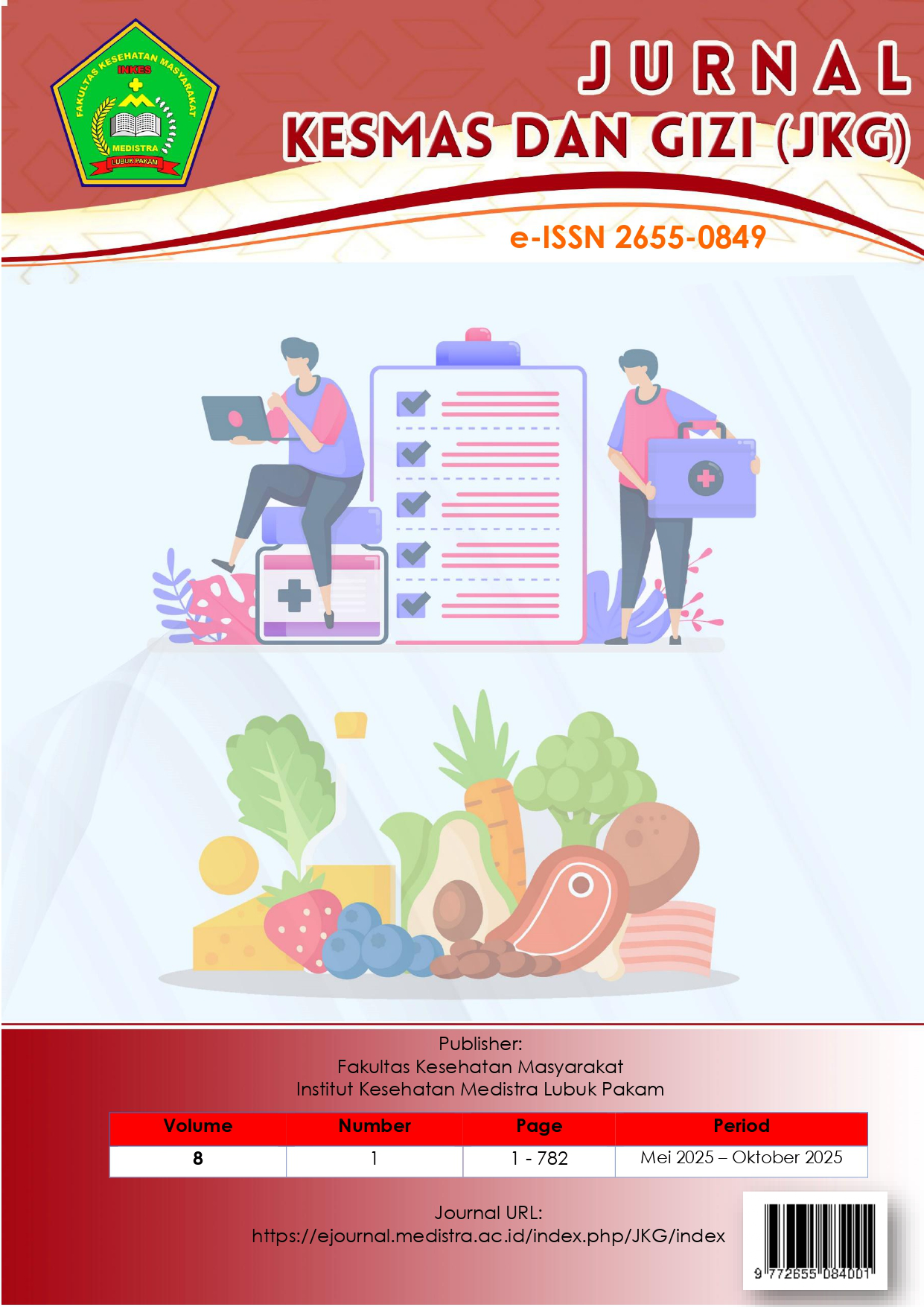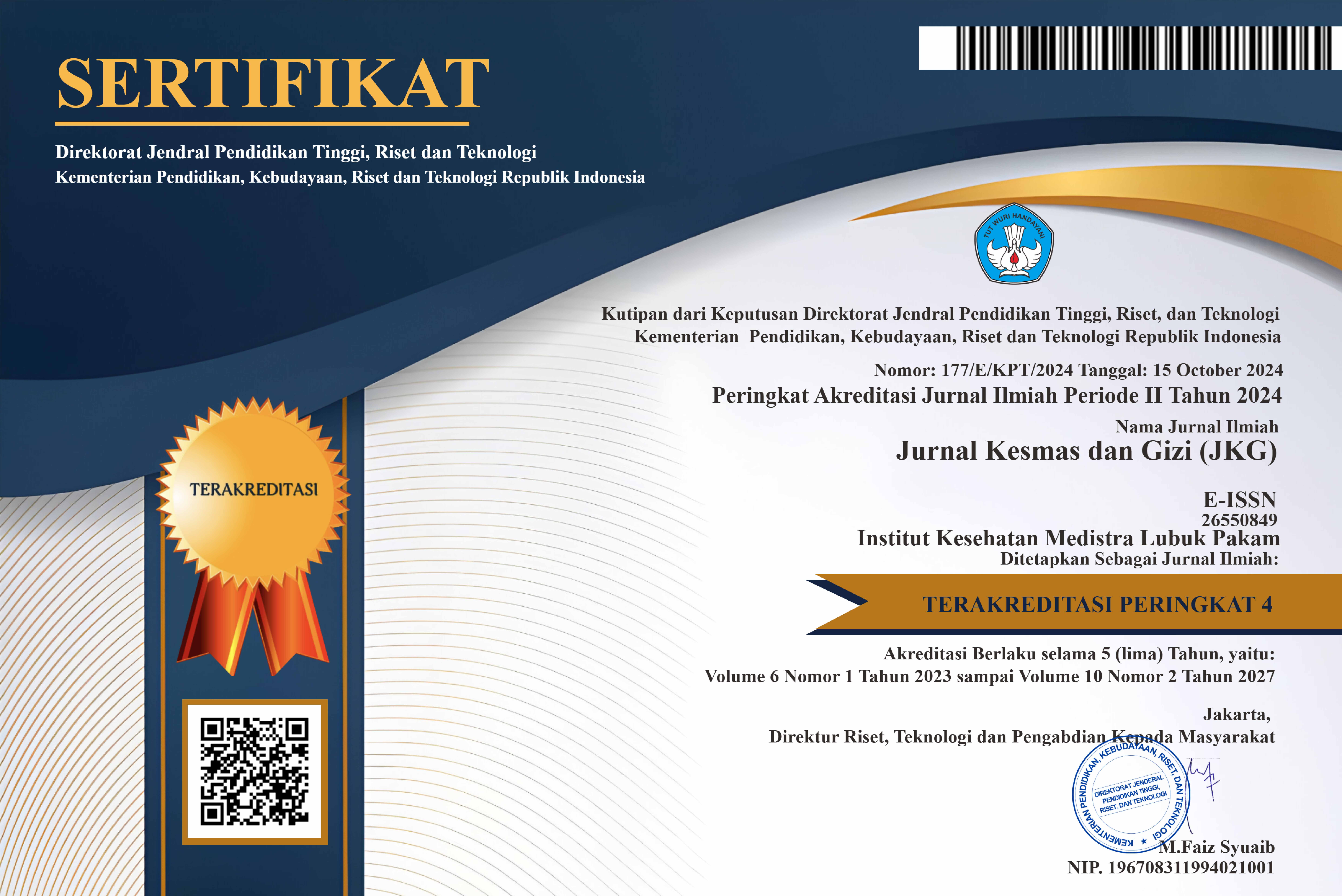The Influence of Socio-Cultural and Behavioral Factors on the Risk of NAFLD (Non-Alcoholic Fatty Liver Disease) and MAFLD (Metabolic Associated Fatty Liver Disease): Literature Review
DOI:
https://doi.org/10.35451/hcxe9s89Keywords:
NAFLD, MAFLDAbstract
Non-Alcoholic Fatty Liver Disease (NAFLD) is the accumulation of liver fat in individuals who are not heavy alcohol users. The term Metabolic Associated Fatty Liver Disease (MAFLD) was introduced to emphasize its association with metabolic syndrome. In addition to classic factors such as obesity, diabetes, and dyslipidemia, socio-cultural factors such as diet, lifestyle, community habits, urbanization, and work culture play an important role in the epidemiology of this disease. This article aims to explore the relationship between socio-cultural factors and the incidence of NAFLD/MAFLD through a review of the latest literature. The literature review was conducted using a narrative approach based on databases. The literature shows that socio-cultural factors influence the risk of NAFLD/MAFLD through various mechanisms, including a shift in diet from traditional patterns to high-calorie and ultra-processed diets, an increase in sedentary lifestyles due to urbanization, and certain cultural perceptions that view obesity as a symbol of prosperity. In addition, social and gender norms also influence physical activity, while family and community support plays an important role in the success of interventions. Socio-cultural factors contribute significantly to the development of NAFLD/MAFLD. Therefore, strategies for the prevention and control of this disease need to integrate the promotion of healthy lifestyles with culturally-based interventions that are sensitive to the local context.
Downloads
References
[1] Eslam M, Sanyal AJ, George J. A new definition for metabolic dysfunction-associated fatty liver disease: An international expert consensus statement. Journal of Hepatology. 2020;73(1):202–209.
[2] Riazi K, et al. The prevalence and incidence of NAFLD worldwide: a systematic review and meta-analysis. The Lancet Gastroenterology & Hepatology. 2022. (estimasi prevalensi global dan tren).
[3] Pennisi G, et al. Clinical outcomes of MAFLD versus NAFLD: A meta-analysis. Liver International. 2024. (perbandingan mortalitas dan risiko kardiometabolik).
[4] Guo Z, et al. Global burden of MAFLD and related cirrhosis: retrospective analyses & 2024 guideline harmonization. 2025. (data epidemiologi terkini & harmonisasi istilah).
[5] Younossi ZM, Ratziu V, Loomba R, et al. Global Prevalence and Clinical Characteristics of Metabolic-associated Fatty Liver Disease: A Meta-Analysis and Systematic Review of 10 739 607 Individuals.
[6] Systematic review “Global Prevalence of Nonalcoholic Fatty Liver Disease: An Updated Review Meta-Analysis comprising a Population of 78 million from 38 Countries.
[7] World Gastroenterology Organisation. (2023). Non-alcoholic Fatty Liver Disease: global scenario, challenges and preparedness. Diakses dari https://www.worldgastroenterology.org/publications/e-wgn/e-wgn-expert-point-of-view-articles-collection/non-alcoholic-fatty-liver-disease-global-scenario-challenges-and-preparedness
[8] Dong, X., et al. (2024). Global burden of adult non-alcoholic fatty liver disease (NAFLD) and non-alcoholic steatohepatitis (NASH) has been steadily increasing over the past decades and is expected to persist in the future. Translational Gastroenterology and Hepatology, 9, 33. https://doi.org/10.21037/tgh-23-118
[9] Younossi, Z. M., Golabi, P., Paik, J. M. (2023). Global Prevalence of Nonalcoholic Fatty Liver Disease: An Updated Review Meta-Analysis comprising a Population of 78 million from 38 Countries. National Center for Biotechnology Information. Diakses dari PubMed: https://pubmed.ncbi.nlm.nih.gov/39094335/
[10] Goenka, M. K., & Roy, A. (2023). Non-alcoholic Fatty Liver Disease: Global Scenario, Challenges and Preparedness. World Gastroenterology Organisation e-WGN Expert Point of View Articles Collection. Diakses dari https://www.worldgastroenterology.org/publications/e-wgn/e-wgn-expert-point-of-view-articles-collection/non-alcoholic-fatty-liver-disease-global-scenario-challenges-and-preparedness
[11] Nakatsuka, T., et al. (2022). Changing clinical management of NAFLD in Asia. National Center for Biotechnology Information. Diakses dari https://pubmed.ncbi.nlm.nih.gov/34459096/
[12] Mitra, S., et al. (2020). Epidemiology of non-alcoholic and alcoholic fatty liver disease. PMC, Diakses dari https://pmc.ncbi.nlm.nih.gov/articles/PMC7063528/
[13] Zeng, X.-F., Huang, J., Wu, Y., Zheng, J., Wang, M., Goh, G. B., Lin, S. (2024). The prognostic role of diet quality in patients with MAFLD: data from NHANES. Nutrition & Diabetes, 14, 4. https://doi.org/10.1038/s41387-024-00261-x
[14] Sadeghianpour, Z., Naderian, M., Jahanshahi, A., Bagheri, S., & Khosravi, M. (2023). Non-alcoholic fatty liver disease and socioeconomic status: a more vulnerable SES is associated with NAFLD. BMC Gastroenterology, 23, 262. Diakses dari https://pmc.ncbi.nlm.nih.gov/articles/PMC10561474/
[15] Lorek, D., & rekan-rekan. (tahun). The socioeconomic and environmental determinants influencing MASLD: sebuah tinjauan. Korean Journal of Family Medicine, 4805. Diakses dari https://kjfm.or.kr/journal/view.php?number=4805
[16] Pineda E., et al. (2024). Review: Effectiveness and policy implications of health taxes on foods high in fat, salt, and sugar. Food Policy, 123, 102599. https://doi.org/10.1016/j.foodpol.2024.102599.
[17] Zadeh, S. H., Aslani, Z., Rostami, H., & Keshtkar, A. (2021). Relationship between dietary patterns and non-alcoholic fatty liver disease: A systematic review and meta-analysis. Journal of Gastroenterology and Hepatology, 36(8), 1960–1972. https://doi.org/10.1111/jgh.15555
[18] Zadeh, S. H., Mansoori, A., & Hosseinzadeh, M. (2021). Relationship between dietary patterns and non-alcoholic fatty liver disease: A systematic review and meta-analysis. Journal of Gastroenterology and Hepatology, 36(6), 1470–1478. https://doi.org/10.1111/jgh.15363.
[19] Grinshpan, L. S., Eilat-Adar, S., Ivancovsky-Wajcman, D., Kariv, R., Gillon-Keren, M., & Zelber-Sagi, S. (2023). Ultra-processed food consumption and non-alcoholic fatty liver disease, metabolic syndrome and insulin resistance: A systematic review. JHEP Reports, 6(1), 100964. https://doi.org/10.1016/j.jhepr.2023.100964.
[20] Golabi P, et al. (2021). Physical activity and the risk of NAFLD: a meta-analysis. J Clin Gastroenterol.
[21] Lee, J.-H., Jeon, S., Lee, H. S., & Kwon, Y.-J. (2023). Gender differences in the risk for incident non-alcoholic fatty liver disease according to the transition of abdominal obesity status: A 16-year cohort study. Nutrients, 15(13), 2880. https://doi.org/10.3390/nu15132880.
[22] Ebrahimi, E., Mardani-Hamooleh, M., Khezeli, M., Avatef-Fazeli, M., Habibi-Asgarabad, M., & rekan lainnya. (2024). Traces of social culture in the lived experiences of emotional eating among Iranian obese women. BMC Public Health, 24, 1982. https://doi.org/10.1186/s12889-024-19501-x
[23] Balakrishnan, M., et al. (2023). Behavioral weight-loss interventions for patients with NAFLD: A scoping review. Hepatology Communications. https://journals.lww.com/hepcomm/fulltext/2023/08010/behavioral_weight_loss_interventions_for_patients.14.aspx
[24] Kwon, O. Y., et al. (2024). Mobile App–Based Lifestyle Coaching Intervention for Nonalcoholic Fatty Liver Disease (NAFLD). Pubmed Central. https://pmc.ncbi.nlm.nih.gov/articles/PMC10905353/
[25] Abdelkhalik, M., et al. (2024). Unveiling metabolic dysfunction-associated fatty liver disease: Knowledge gaps and attitudes among Lebanese university students. PLoS ONE, 19(8), e0306825. https://doi.org/10.1371/journal.pone.0306825.
[26] George, H., Permata, F. S., D’Souza, C. M., & Adeghate, E. A. (2025). Cultural and molecular factors predisposed to non-alcoholic fatty liver disease and type 2 diabetes mellitus. Nutrients, 17(11), 1797. https://doi.org/10.3390/nu17111797.
[27] Kusnik, A., et al. (2024). The influence of urbanization on the patterns of hepatocellular carcinoma mortality from 1999 to 2020. Gastroenterology Research, 17(3), 116–125. https://doi.org/10.14740/gr1743.
[28] Kusnik, A., et al. (2024). The influence of urbanization on the patterns of hepatocellular carcinoma mortality from 1999 to 2020. Gastroenterology Research, 17(3), 116–125. https://doi.org/10.14740/gr1743.
Downloads
Published
Issue
Section
License
Copyright (c) 2025 Fikriyah Arfina Nainggolan, Shinta Andria Chairani, Murni Noviani Nasution

This work is licensed under a Creative Commons Attribution 4.0 International License.
Copyright in each article is the property of the Author.


























